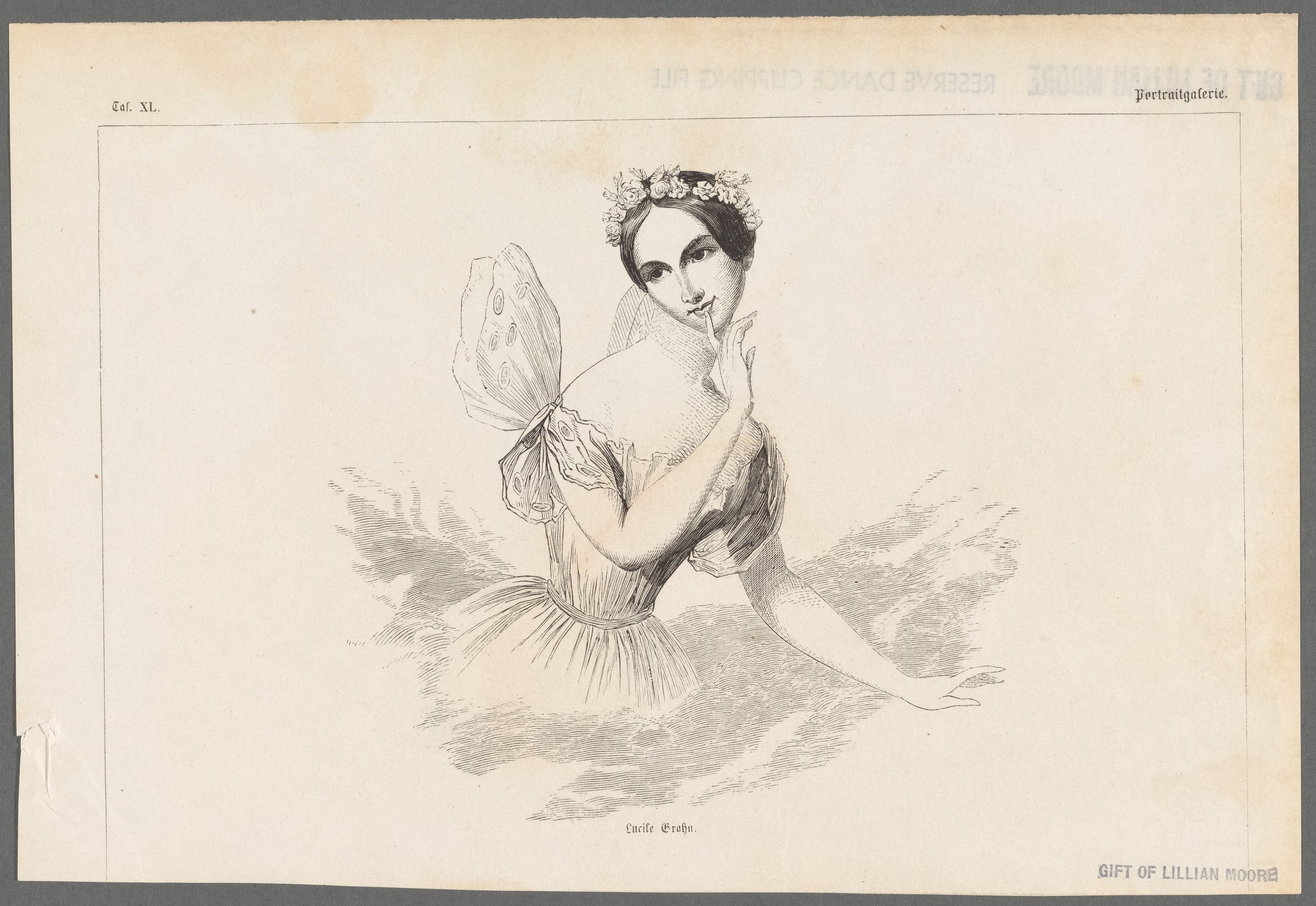Ballet Across the Globe: Bournonville and the Danes
August Bournonville, lithograph by Em. Baerentzen, 1841
Contrary to popular belief, classical ballet isn’t just one style of dance that functions the same way across the globe. The art form is instead comprised of many schools of technique that vary in style, choreographic emphasis, and pedagogical frameworks. From Vaganova to Cecchetti and Balanchine, each methodology strives to maintain its distinctive flair. Rounded port de bras, delicate footwork, and crisp allegro comprise the signature style of the Danish ballet, also referred to as the Bournonville method. The technique began in Copenhagen in the 1830s and was created by Danish ballet master August Bournonville.
Born in Copenhagen in 1805, Bournonville studied ballet under French and Italian traditions. His teachers included his father, Antoine Bournonville—a French ballet dancer and choreographer—as well as Vincenzo Galeotti, an Italian ballet master of Copenhagen’s Royal Danish Ballet from 1775 to 1816. Bournonville continued his training under the French ballet masters Auguste Vestris and Pierre Gardel before dancing with the Paris Opera Ballet. Eventually, he returned to Copenhagen to join the Royal Danish Ballet as a soloist, bringing the elegance and refinement of the French style with him. Bournonville soon began choreographing for the company, premiering his version of Filippo Taglioni’s La Sylphide in 1836, featuring his 17-year-old student Lucile Grahn in the principal role. He continued to create ballets, many of which are still staged today, like Napoli (1842), Flower Festival in Genzano (1858), and Le Conservatoire (1849).
You can find certain noteworthy characteristics in all his works: a lowered eyeline, controlled legs, and an emphasis on harmony between the body and the soul. In this video, we see Johann Kobborg, former principal with both the Royal Danish and the Royal Ballet, coaching current Royal Ballet principal dancer Marcelino Sambé in Flower Festival in Genzano. It is clear how important the dancer's use of épaulement (use of the upper body) is when expressing a serene, humble affect. The dancer must be unadorned and understated through inclined heads and low arm positions while the legs execute exuberant jumps complete with soft landings. This contrast between the upper and lower body sets the Danish style apart from other ballet techniques, giving it the impression of a sweet spontaneity.
In this video clip from BBC’s Darcey’s Ballet Heroes, we hear dance critic Judith Mackrell stating, “It’s not all about the big leap that seems to hang for three seconds in the air. It’s very quick, sharp, very musical, tiny tiny steps. And even when they do big jumps, there’s a kind of elasticity that makes it look like it’s almost an unconscious thing.”When watching the dancers of the company demonstrate contrasting ballet styles in the studio with Darcey Bussell and Nikolaj Hubbe, the Royal Danish Ballet’s Artistic Director from 2008-2024, we can see how angularity and intimacy are cultivated through the body’s positioning. One dancer remarks after positioning herself in Bournonville’s preferred fashion, “It’s more human,” (3:42-4:31).
Lucile Grahn in August Bournonville’s La Sylphide. J. J. Weber, Die Bilder-Welt, Leipzig, 1858

